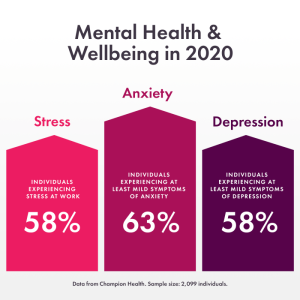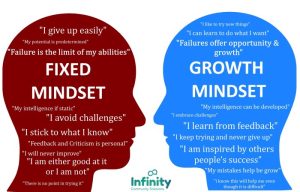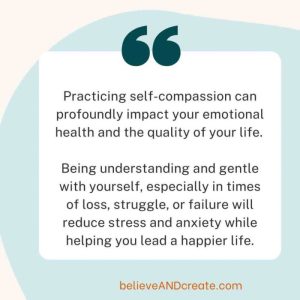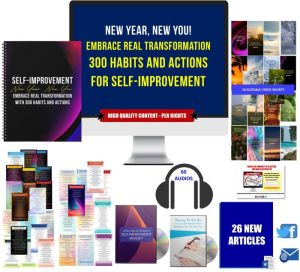Workplace Stress Management Techniques

Workplace stress management techniques are crucial for maintaining employee well-being and boosting productivity. Understanding the sources of stress, from demanding workloads to interpersonal conflicts, is the first step. This exploration delves into practical strategies for identifying personal stressors, prioritizing tasks effectively, and incorporating mindfulness and relaxation practices into daily routines. We will also examine effective communication, conflict resolution, and resources for managing anxiety and depression, ultimately building resilience and fostering a healthier work environment.
This guide provides a comprehensive framework for navigating the challenges of workplace stress, empowering individuals to take control of their well-being and thrive in their professional lives. From time management techniques like the Pomodoro method to the importance of building a strong support system, we cover a range of approaches to help you manage stress effectively and cultivate a more balanced and fulfilling work experience.
Defining Workplace Stress
Workplace stress is a pervasive issue affecting employees across various industries and organizational structures. It’s a state of mental or emotional strain resulting from demanding or challenging circumstances in the professional environment. Understanding its sources, impact, and different forms is crucial for implementing effective management strategies.Workplace stress stems from a multitude of factors, often interacting in complex ways. These sources can be broadly categorized into job demands, role ambiguity, work-life conflict, and organizational factors.
High workloads, long working hours, and tight deadlines are common examples of job demands. Role ambiguity, the lack of clarity about one’s responsibilities or expectations, can lead to uncertainty and anxiety. Work-life conflict, the struggle to balance professional and personal responsibilities, is increasingly prevalent in today’s society. Finally, organizational factors such as poor management, lack of support, and a hostile work environment significantly contribute to workplace stress.
Sources of Workplace Stress
The sources of workplace stress are diverse and often interconnected. Excessive workload, demanding deadlines, and insufficient resources consistently rank among the top stressors. A lack of control over one’s work, coupled with ambiguous roles and responsibilities, further intensifies stress levels. Poor communication, inadequate feedback, and a lack of recognition can erode morale and contribute to feelings of inadequacy and frustration.
Furthermore, organizational changes, such as restructuring or mergers, can introduce uncertainty and anxiety. Finally, interpersonal conflicts with colleagues or superiors can create a hostile work environment, negatively impacting mental well-being.
Impact of Workplace Stress on Employee Well-being
Workplace stress significantly impacts employee well-being, manifesting both physically and psychologically. Physically, it can lead to cardiovascular problems, gastrointestinal issues, headaches, and weakened immunity. Psychologically, the effects include anxiety, depression, burnout, and reduced job satisfaction. Chronic stress can negatively affect sleep quality, leading to fatigue and decreased productivity. The cumulative effect of these factors can lead to absenteeism, presenteeism (being present but unproductive), and ultimately, employee turnover.
For instance, a study by the American Institute of Stress found that stress-related illnesses account for a significant portion of healthcare costs and lost productivity in the United States.
Acute vs. Chronic Workplace Stress
Acute workplace stress is characterized by short-term, intense pressure resulting from specific events or situations, such as a critical deadline or a major presentation. Symptoms typically include increased heart rate, heightened anxiety, and temporary difficulty concentrating. These symptoms usually subside once the stressful event is over. Chronic workplace stress, in contrast, is a prolonged state of strain resulting from ongoing exposure to stressors.
It develops gradually, often leading to more severe physical and psychological consequences, such as burnout, depression, and chronic health problems. For example, consistently working excessive overtime for an extended period can lead to chronic stress, unlike a one-time instance of working late to meet a deadline.
Examples of Common Workplace Stressors and Their Effects
Several common workplace stressors and their effects are illustrated below:
| Stressors | Effects |
|---|---|
| High workload | Fatigue, burnout, decreased productivity, anxiety |
| Lack of control | Frustration, helplessness, decreased job satisfaction |
| Poor communication | Confusion, misunderstandings, increased errors |
| Work-life conflict | Anxiety, reduced work performance, family problems |
| Bullying and harassment | Depression, anxiety, PTSD, physical health problems |
Identifying Personal Stressors
Understanding your individual stressors is crucial for effective workplace stress management. By pinpointing the sources of your stress, you can develop targeted strategies to mitigate their impact. This involves recognizing both the triggers and the intensity of your reactions, allowing for a more personalized approach to stress reduction.Identifying the specific sources of workplace stress is the first step towards managing it effectively.
This process requires self-reflection and a willingness to honestly assess your experiences. Ignoring stressors will only allow them to fester and potentially worsen.
Differentiating Controllable and Uncontrollable Stressors
Categorizing stressors as either controllable or uncontrollable is a vital step in developing effective coping mechanisms. Controllable stressors are those that you have the power to influence or change, such as workload management or communication styles. Uncontrollable stressors, on the other hand, are often external factors beyond your direct influence, such as organizational restructuring or economic downturns. Recognizing this distinction allows you to focus your energy on managing what you can, while developing resilience to navigate what you cannot.
For example, you might be able to control your response to a demanding deadline (controllable) by prioritizing tasks and seeking support, but you may not be able to control a company-wide layoff (uncontrollable) beyond preparing for potential consequences.
Prioritizing Stressors Based on Impact and Manageability
Once stressors are identified, it’s essential to prioritize them based on their impact and manageability. A simple matrix can be helpful. High-impact, highly manageable stressors should be tackled first. These are the “low-hanging fruit” that offer quick wins and build momentum. High-impact, low-manageable stressors require a more strategic approach, potentially involving seeking support from colleagues, supervisors, or mental health professionals.
Low-impact stressors, regardless of manageability, can often be delegated or simply ignored. This prioritization ensures that you focus your efforts where they will have the greatest positive impact. For instance, a consistently late colleague (high impact, potentially manageable through communication) might be prioritized over a company-wide policy change (high impact, low manageable).
Self-Assessment Questionnaire for Identifying Workplace Stressors
The following questionnaire can help you identify your personal workplace stressors. Rate each statement on a scale of 1 to 5, with 1 being “Not at all” and 5 being “Extremely.”
| Statement | 1 | 2 | 3 | 4 | 5 | |
|---|---|---|---|---|---|---|
| I feel overwhelmed by my workload. | ||||||
| I experience frequent conflicts with colleagues. | ||||||
| I lack clear direction or goals in my role. | ||||||
| I feel unsupported by my supervisor or team. | ||||||
| I have insufficient resources to complete my tasks. | ||||||
| I worry about job security. | ||||||
| I experience long working hours regularly. | ||||||
| I feel a lack of recognition for my work. | ||||||
| I struggle to maintain a healthy work-life balance. | ||||||
| I feel pressured to meet unrealistic deadlines. |
Time Management Techniques: Workplace Stress Management Techniques

Effective time management is crucial for reducing workplace stress. By strategically organizing and prioritizing tasks, individuals can gain a greater sense of control over their workload, leading to decreased anxiety and improved overall well-being. Proactive time management prevents the feeling of being overwhelmed and promotes a more balanced work-life integration.Effective time management strategies involve a combination of planning, prioritization, and execution.
This includes identifying time-wasting activities, setting realistic goals, and breaking down large tasks into smaller, more manageable steps. Regularly reviewing and adjusting schedules is also essential to adapt to changing demands and priorities. Utilizing tools and techniques, such as time-blocking and prioritization matrices, can significantly enhance efficiency and reduce stress levels.
Time-Blocking Techniques and Their Benefits
Time-blocking involves scheduling specific blocks of time for particular tasks or activities. This structured approach helps to improve focus, reduce multitasking, and create a sense of control over one’s day. For example, blocking out two hours for focused work on a critical project minimizes interruptions and maximizes productivity. Another example could be dedicating 30 minutes each morning to respond to emails, preventing them from consuming the entire workday.
The benefits include increased productivity, reduced procrastination, and a clearer understanding of time allocation, ultimately contributing to stress reduction.
Sample Weekly Schedule Incorporating Stress-Reducing Time Management Strategies
A sample weekly schedule might include dedicated blocks for focused work, interspersed with short breaks for relaxation and rejuvenation. For instance, Monday could begin with an hour of focused work on high-priority tasks, followed by a 15-minute break for a short walk or mindful meditation. This pattern could then be repeated throughout the day, with longer breaks incorporated for lunch and other personal needs.
Tuesdays might focus on collaborative projects, with scheduled meeting times and dedicated periods for individual contributions. This structured approach minimizes the feeling of being overwhelmed and promotes a more balanced workflow. The schedule should be personalized to individual needs and preferences, incorporating flexibility to accommodate unexpected events.
Comparison of Time Management Methodologies
The Pomodoro Technique and the Eisenhower Matrix represent two distinct, yet complementary, approaches to time management. The Pomodoro Technique involves working in focused bursts (typically 25 minutes) followed by short breaks. This technique promotes concentration and prevents burnout. The Eisenhower Matrix (also known as the Urgent-Important Matrix) prioritizes tasks based on their urgency and importance, helping individuals focus on high-impact activities and delegate or eliminate less crucial ones.
While the Pomodoro Technique focuses on focused work intervals, the Eisenhower Matrix helps in strategic task prioritization. Both methodologies, when used in conjunction, can lead to improved time management and reduced stress. For example, one might use the Eisenhower Matrix to identify high-priority tasks and then utilize the Pomodoro Technique to efficiently complete those tasks.
Mindfulness and Relaxation Practices

Mindfulness and relaxation techniques offer powerful tools for managing workplace stress. By cultivating present moment awareness and incorporating relaxation practices into your daily routine, you can significantly reduce stress levels, improve focus, and enhance overall well-being. These techniques help shift the focus from anxieties about the future or regrets about the past to the present moment, allowing for a calmer and more productive work experience.Mindfulness techniques, such as meditation and deep breathing exercises, encourage a non-judgmental observation of thoughts and feelings without getting carried away by them.
This cultivates emotional regulation and resilience, enabling individuals to navigate workplace challenges more effectively. Regular practice can lead to significant improvements in mood, stress tolerance, and job satisfaction.
Mindfulness Techniques in the Workplace
Mindfulness can be readily integrated into the workday. Meditation, even for short periods, can significantly reduce stress and improve concentration. Deep breathing exercises provide a quick and easy way to calm the nervous system during stressful moments. Body scans, which involve bringing awareness to different parts of the body, can help release physical tension. Mindful walking, paying attention to the sensation of your feet on the ground, can also be a beneficial practice during breaks.
Benefits of Incorporating Mindfulness into Daily Work Routines
The benefits of incorporating mindfulness into the daily work routine are substantial. Studies have shown that regular mindfulness practice can lead to reduced stress and anxiety, improved focus and concentration, increased emotional regulation, and enhanced creativity and problem-solving skills. Employees who practice mindfulness often report improved sleep quality, better relationships with colleagues, and a greater sense of overall well-being.
This translates into increased productivity, reduced absenteeism, and a more positive work environment.
Guided Meditation Script for Stress Reduction
Find a quiet space where you can sit or lie down comfortably. Close your eyes gently. Begin by focusing on your breath, noticing the natural rhythm of your inhalations and exhalations. As you breathe in, feel the air filling your lungs, and as you breathe out, feel the air leaving your body. Notice any sensations in your body, without judgment.
If your mind wanders, gently guide your attention back to your breath. Repeat this process for 5-10 minutes. When you’re ready, slowly open your eyes.
“Let your breath be your anchor, grounding you in the present moment.”
Practical Tips for Practicing Mindfulness During Breaks or Lunch Hours
Incorporating mindfulness during breaks or lunch hours is achievable with minimal effort. Take a few minutes to simply sit quietly and observe your breath. Engage in a mindful walk, paying attention to the sensations in your feet and the surroundings. Practice mindful eating, savoring each bite and paying attention to the taste and texture of your food.
Listen to calming music or nature sounds. Even a short period of mindful activity can significantly reduce stress and improve your overall well-being.
Communication and Conflict Resolution
Effective communication and conflict resolution are crucial for a healthy and productive work environment. Poor communication and unresolved conflicts are significant contributors to workplace stress, leading to decreased morale, reduced productivity, and even burnout. Implementing strategies to improve communication and manage conflict proactively can significantly mitigate these negative effects.
Effective Communication Strategies for Stress Prevention
Open and honest communication is fundamental to preventing workplace stress. Clear expectations, regular feedback, and active listening foster trust and understanding among colleagues and between employees and management. This reduces ambiguity and prevents misunderstandings that can escalate into stressful situations. For example, a manager who clearly communicates project deadlines and expectations minimizes the stress employees might experience from uncertainty.
Similarly, employees who openly communicate their concerns or challenges to their supervisors create an environment where problems can be addressed before they become overwhelming.
Techniques for Constructive Conflict Resolution
Workplace conflicts are inevitable, but how they are handled determines their impact. Constructive conflict resolution involves addressing disagreements respectfully and collaboratively, focusing on finding mutually acceptable solutions. Techniques include active listening, empathy, and compromise. Instead of focusing on blame or winning, the goal is to understand each party’s perspective and find common ground. For instance, a disagreement over project priorities can be resolved through a collaborative discussion where team members articulate their needs and work together to create a prioritized plan that addresses everyone’s concerns.
Assertive Communication Skills and Their Application
Assertive communication involves expressing one’s needs and opinions clearly and respectfully, without being aggressive or passive. It’s a crucial skill for navigating workplace conflicts and preventing stress. Assertive communication includes using “I” statements to express feelings and concerns without blaming others. For example, instead of saying “You always interrupt me,” an assertive statement would be, “I feel unheard when I’m interrupted.
Could we please allow each other to finish our thoughts?” Another example involves setting clear boundaries. An employee might assertively say, “While I’m happy to help, I’m currently overloaded with work. Could we prioritize tasks to ensure I can meet all deadlines?”
A Step-by-Step Guide for Handling Difficult Conversations at Work
Difficult conversations are often unavoidable, but a structured approach can minimize stress and lead to positive outcomes.
- Preparation: Clearly define the purpose of the conversation and gather relevant information. Consider the other person’s perspective and anticipate potential responses.
- Setting the Stage: Choose a private and neutral location. Ensure both parties have adequate time and are free from distractions.
- Opening the Conversation: Begin by expressing your intentions clearly and respectfully. Focus on the issue, not the person.
- Active Listening: Pay close attention to the other person’s perspective. Ask clarifying questions and summarize their points to ensure understanding.
- Expressing Your Concerns: Use “I” statements to express your feelings and concerns without blaming or accusing.
- Collaboratively Finding Solutions: Work together to brainstorm solutions that address everyone’s needs and concerns.
- Agreeing on Next Steps: Summarize the agreed-upon actions and timelines. Document the outcome of the conversation.
- Follow-Up: Check in with the other person to ensure the agreed-upon actions are being implemented and address any new concerns that may arise.
Stress and Anxiety Management
Workplace stress and anxiety are prevalent issues impacting employee well-being and productivity. Effectively managing these challenges requires a multifaceted approach, incorporating various techniques to build resilience and promote mental health. This section explores practical strategies for stress and anxiety reduction in the workplace.
Techniques for Managing Stress and Anxiety, Workplace stress management techniques
Several evidence-based techniques can significantly reduce stress and anxiety levels. These techniques address both the physiological and psychological aspects of stress response, helping individuals regain control and improve their overall well-being. A combination of approaches often yields the best results, allowing individuals to tailor their strategies to their specific needs and preferences.
- Deep Breathing Exercises: Slow, deep breaths activate the parasympathetic nervous system, counteracting the “fight-or-flight” response associated with stress. Inhaling deeply through the nose and exhaling slowly through the mouth can calm the mind and reduce physiological arousal.
- Cognitive Behavioral Therapy (CBT) Techniques: CBT helps individuals identify and challenge negative thought patterns contributing to stress and anxiety. Techniques like cognitive restructuring and behavioral experiments can help replace unhelpful thoughts with more realistic and positive ones, leading to improved emotional regulation.
- Problem-Solving Strategies: Breaking down overwhelming tasks into smaller, manageable steps can reduce feelings of being overwhelmed. Prioritizing tasks and setting realistic goals allows for a sense of accomplishment and control, reducing stress associated with deadlines and workload.
Benefits of Regular Exercise for Stress Reduction
Regular physical activity is a powerful tool for stress reduction. Exercise releases endorphins, natural mood boosters that alleviate stress and anxiety. Furthermore, physical activity provides a healthy outlet for pent-up energy and tension, promoting both physical and mental well-being. Studies have shown a strong correlation between regular exercise and reduced levels of stress hormones like cortisol. Even moderate exercise, such as a brisk walk, can provide significant benefits.
For example, a study published in the Journal of Sports Medicine and Physical Fitness showed that 30 minutes of moderate-intensity exercise three times a week significantly reduced anxiety levels in participants.
Relaxation Techniques
Relaxation techniques are crucial for managing stress and anxiety. These techniques help to calm the nervous system and reduce physiological arousal. Consistent practice is key to reaping the full benefits.
- Progressive Muscle Relaxation: This technique involves systematically tensing and releasing different muscle groups in the body. By focusing on the sensations of tension and release, individuals can learn to identify and alleviate muscle tension associated with stress. Starting with the toes and working upwards to the head, each muscle group is tensed for a few seconds and then relaxed, promoting a sense of deep relaxation.
- Meditation: Meditation involves focusing on a single point of attention, such as the breath, a mantra, or a visual image. This practice calms the mind, reduces racing thoughts, and promotes a sense of inner peace. Regular meditation practice can significantly improve stress management skills.
- Yoga: Combining physical postures, breathing techniques, and meditation, yoga integrates mind and body, promoting relaxation and stress reduction. The controlled movements and deep breathing help to calm the nervous system and improve flexibility and strength.
Coping Mechanisms for Anxiety-Provoking Situations at Work
Dealing with anxiety-provoking situations at work requires proactive coping mechanisms. These strategies help to manage immediate anxiety and build resilience for future challenges.
- Positive Self-Talk: Replacing negative self-criticism with positive affirmations can help manage anxiety. Repeating positive statements, such as “I can handle this,” or “I am capable,” can boost confidence and reduce self-doubt.
- Seeking Support: Talking to a trusted colleague, supervisor, or mentor can provide emotional support and perspective. Sharing concerns can alleviate feelings of isolation and help develop effective solutions to challenging situations.
- Time Management and Prioritization: Effective time management can reduce feelings of being overwhelmed. Prioritizing tasks and setting realistic goals can help prevent anxiety associated with deadlines and workload.
In conclusion, effectively managing workplace stress is not merely about coping with challenges; it’s about proactively building resilience and fostering a sustainable approach to work-life balance. By implementing the techniques discussed—from mindful practices and improved communication to prioritizing self-care and seeking support when needed—individuals can significantly reduce stress, enhance their overall well-being, and contribute to a more positive and productive work environment.
Remember that seeking professional help is a sign of strength, not weakness, and is crucial for navigating significant challenges.
Question Bank
Can stress management techniques be applied outside of the workplace?
Absolutely! Many techniques, such as mindfulness, time management, and self-care, are universally applicable and beneficial for overall well-being.
What if my employer doesn’t support mental health initiatives?
Focus on what you can control: your own self-care practices and seeking support from external resources like therapists or support groups.
How long does it take to see results from stress management techniques?
Results vary, but consistent practice is key. You may notice improvements in mood and stress levels within weeks, with more significant changes over time.
Are there specific techniques for managing stress related to deadlines?
Yes, time blocking, prioritization (Eisenhower Matrix), and breaking down large tasks into smaller, manageable steps are particularly helpful for deadline-related stress.





